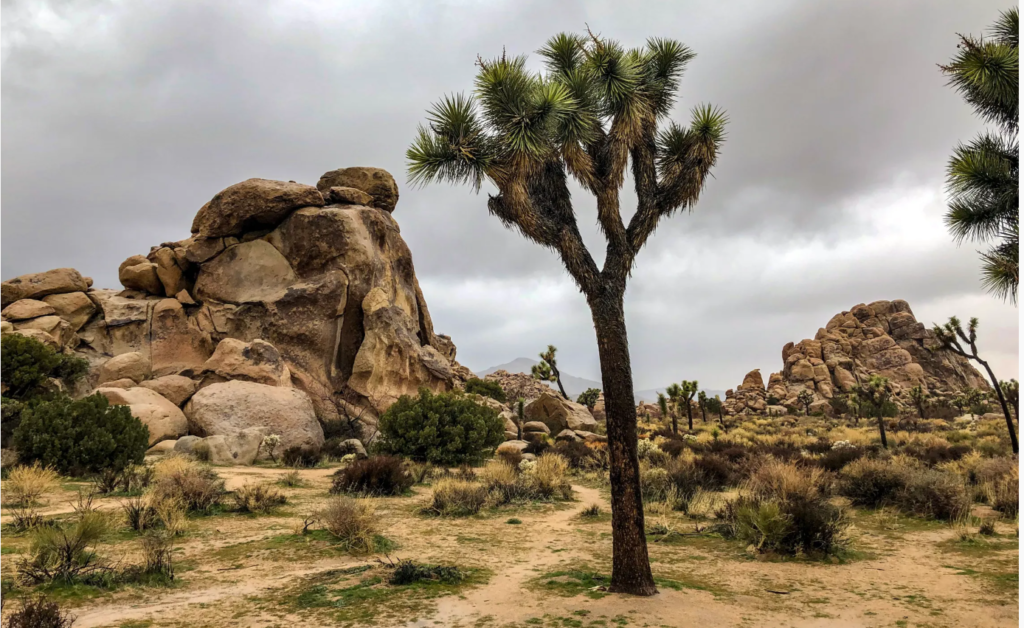Weekend Escape: Adventure and Serenity in Joshua Tree
Joshua Tree National Park, located in southern California, is a stunning blend of natural beauty and adventure. Whether you are an avid hiker, a nature lover, or someone looking for peaceful solitude, Joshua Tree has something to offer everyone. The unique desert landscape, dotted with the park’s famous Joshua Trees, rugged mountains, and vast open spaces, creates an ideal destination for an unforgettable weekend escape.
Before embarking on your adventure, let’s first get familiar with the park’s iconic Joshua Tree plant and how it shapes the environment.
What is a Joshua Tree?
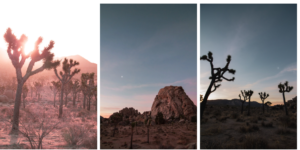
Acknowledge the Joshua Tree Plant
Joshua Trees (Yucca brevifolia) are members of the agave family and can grow up to 40 feet tall. Their spiky leaves and unique appearance make them a symbol of the Mojave Desert. Though they resemble trees, they are technically large shrubs. These resilient plants thrive in harsh desert conditions and play an important role in the ecosystem, providing shelter and food for a variety of desert species.
The Unique Landscape of Joshua Tree National Park
The park’s diverse terrain includes rugged mountains, wide desert plains, and striking rock formations, which makes it a popular destination for both outdoor enthusiasts and those seeking serenity. With over 800,000 acres to explore, Joshua Tree offers miles of hiking trails, rock climbing opportunities, and chances to experience its iconic dark skies.
The Importance of Joshua Trees in the Ecosystem
While these trees are the park’s namesake, they are just one part of a rich and varied ecosystem. The Joshua Tree is a keystone species in the park, supporting everything from small rodents to large desert birds like the California quail. Its deep roots help stabilize the fragile desert soil, preventing erosion, while its flowers provide food to many pollinators, including the yucca moth.
Is Joshua Tree or Death Valley Better?
While both Joshua Tree and Death Valley National Parks offer breathtaking landscapes, they each have their own unique features. Let’s compare them in different aspects to help you decide which one suits your travel style.
Is Death Valley or Joshua Tree Better in Different Seasons?
Joshua Tree vs. Death Valley in Summer:
In the peak summer months, Death Valley is known for scorching temperatures, with heat often reaching over 120°F. Joshua Tree, however, remains cooler, especially at higher elevations, making it more suitable for outdoor activities in summer.
Joshua Tree vs. Death Valley in Winter:
Winter in Joshua Tree offers mild, pleasant weather—perfect for hiking and stargazing. Death Valley is also a great winter destination, but Joshua Tree’s higher elevation provides a more comfortable experience.
Joshua Tree vs. Death Valley in Fall and Spring:
Both parks shine in fall and spring, with moderate temperatures and blooming wildflowers. However, Joshua Tree is known for its stunning spring wildflower blooms, while Death Valley boasts vibrant spring colors in its lower desert regions.
More Related Post: Best Hawaiian Island for First-Time Visitors
Which Park is Better for Hiking?
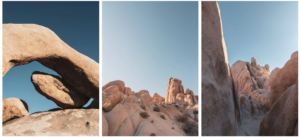
Hiking in Joshua Tree:
Joshua Tree offers diverse hiking trails, from easy walks to challenging scrambles. Popular trails include the Hidden Valley Nature Trail and Barker Dam, perfect for exploring the park’s iconic flora and rock formations.
Hiking in Death Valley:
Death Valley presents a more strenuous hiking experience. Trails such as Telescope Peak and Golden Canyon can be demanding due to the desert’s extreme heat, which makes Joshua Tree a better choice for casual and family-friendly hikes.
Which Park Offers Better Stargazing?
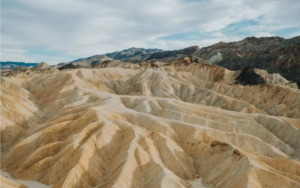
Joshua Tree is a designated Dark Sky Park, making it one of the best places in the world to stargaze. The minimal light pollution allows for crystal-clear views of the Milky Way and countless constellations. Death Valley also offers excellent stargazing, but Joshua Tree’s higher elevation and fewer crowds make it a stellar choice for star-gazers.
The Perfect Itinerary for a Weekend Trip to Joshua Tree
If you’re planning a weekend escape, here’s how you can maximize your time in Joshua Tree.
Day 1: Arrival and inspection
After arriving at Joshua Tree, start your trip with a visit to the Hall of Horrors, a collection of jagged rock formations perfect for adventurers and photographers. Then, explore Arch Rock, a natural arch that provides amazing photo opportunities. As the day winds down, head to Cholla Cactus Garden to enjoy a sunset, followed by stargazing under the desert sky.
Day 2: Hiking and Sunset Viewing
Begin your second day with a hike on the Hidden Valley Nature Trail, where you’ll encounter beautiful desert flora and perhaps even some wildlife. Afterward, make your way to Turtle Rock for an unforgettable sunrise. As evening approaches, head back to Cholla Cactus Garden to watch the sunset and stay for the stargazing.
Day 3: Final Adventures and Departure
On your final day, explore the majestic Jumbo Rocks, where towering boulders create a surreal desert landscape. Don’t forget to visit the Barker Dam Nature Trail for a tranquil hike before heading back to the town of Joshua Tree for a final meal or souvenir.
More Related Post: Devil’s River: A Paradise for Nature & Adventure Lovers
Additional Joshua Tree National Park Hikes
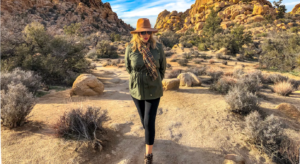
For those who crave more adventure, here are some additional trails to explore:
- Ryan Mountain Trail: A challenging but rewarding hike with panoramic views of the entire park.
- Cottonwood Spring Oasis Trail: A peaceful desert trail that leads to an oasis filled with wildlife.
- Arch Rock Trail: A scenic, easy hike to one of the park’s most iconic rock formations.
Joshua Tree Travel Tips
How to Avoid Desert Hazards
Joshua Tree National Park is a beautiful yet challenging environment. The desert landscape presents unique hazards that visitors must be prepared for. Here are some key tips to help avoid common desert dangers:
- Rattlesnakes: While they usually avoid humans, rattlesnakes can be found in Joshua Tree, especially during the warmer months. Always watch where you’re stepping and stick to marked trails. Be cautious when reaching into crevices or under rocks. If bitten, stay calm and seek medical help immediately.
- Cactus Spines: Joshua Tree is home to various types of cacti, which can be hazardous if you accidentally come into contact with their sharp spines. Wear long pants and avoid getting too close to cacti, particularly the Jumping Cholla, which has spines that can easily latch onto your skin.
- Intense Sunlight: The desert sun can be harsh, especially in the summer. Always wear a hat, sunscreen, and sunglasses to protect yourself from sunburn. Make sure to drink plenty of water to stay hydrated. Try to avoid hiking during the hottest parts of the day (midday to 3 PM).
- Extreme Temperatures: The temperature can fluctuate drastically between day and night. While the days are often hot, desert nights can become chilly. Always be prepared for temperature shifts by bringing layers of clothing and a jacket.
- Dehydration: The dry desert air can quickly lead to dehydration, even if you don’t feel thirsty. Always carry enough water, especially if you plan on hiking. A general rule is to drink at least 2 liters of water per person per day, more if you’re engaging in strenuous activity.
More Related Post: Loggerhead Key: A Hidden Paradise in Dry Tortugas
Best Times to Visit Joshua Tree
The best time to visit Joshua Tree National Park depends on the season and your preferences for weather conditions:
- Spring (March to May): This is the most popular time to visit, as the temperatures are pleasant for outdoor activities like hiking and camping. The desert wildflowers also bloom in spring, creating a vibrant and colorful landscape.
- Fall (October to November): Like spring, fall offers moderate temperatures that are ideal for hiking, climbing, and camping. The park is less crowded in the fall compared to spring, making it a great time for visitors seeking a more tranquil experience.
- Summer (June to August): Summer in Joshua Tree can be extremely hot, especially during the day, with temperatures regularly reaching over 100°F (38°C). While it’s still possible to visit, summer activities are best limited to early mornings and evenings to avoid the midday heat. If you do visit in summer, be sure to hike during cooler hours, carry plenty of water, and protect yourself from the sun.
- Winter (December to February): Winter brings cooler temperatures and fewer visitors, making it an excellent time to experience the park with less crowd. It can be cold at higher elevations, and snow is possible, which adds a beautiful contrast to the desert landscape. Winter is ideal for visitors who enjoy cooler temperatures and a peaceful environment.
Where to Stay in Joshua Tree
Joshua Tree offers a range of accommodation options for all types of travelers, from rustic camping experiences to luxurious retreats:
- Camping in Joshua Tree: There are nine campgrounds in Joshua Tree National Park, including Jumbo Rocks, Hidden Valley, and Black Rock Canyon. These campgrounds offer a more immersive experience in nature. During peak season, it’s recommended to make reservations early as campsites tend to fill up quickly. Winter camping is also popular due to the mild temperatures.
- Hotels and Motels: If you prefer a more comfortable stay, the nearby town of Joshua Tree has a range of accommodations. Pioneertown Motel offers a charming, Western-themed stay, while Joshua Tree Inn is known for its cozy rooms and relaxing atmosphere. There are also options in nearby towns such as Twentynine Palms and Yucca Valley.
- Vacation Rentals: For more privacy and space, you can opt for a vacation rental. Platforms like Airbnb and Vrbo offer a variety of homes, cabins, and unique desert properties, allowing you to experience the beauty of the desert in a more personalized setting.
- Luxury Retreats: If you want to splurge, there are upscale properties around Joshua Tree offering a luxurious experience. Some retreats provide private pools, spas, and wellness centers, making it a great option for those seeking a serene and peaceful stay.
What to Wear for Your Desert Adventure
Dressing appropriately for the desert environment is crucial for your safety and comfort. Here’s what to wear for a day in Joshua Tree:
- Lightweight, Breathable Clothing: During the day, temperatures can rise, so opt for lightweight, moisture-wicking clothes to keep cool and dry. Long sleeves and pants are ideal for protecting your skin from the sun and cactus spines, while still allowing your skin to breathe.
- Layer Up for Chilly Nights: Desert temperatures can drop significantly in the evening. Always bring a warm jacket or fleece for the cooler nighttime temperatures, especially if you plan on stargazing or camping.
- Sun Protection: Wear a wide-brimmed hat, sunglasses with UV protection, and sunscreen with a high SPF (30+). Reapply sunscreen every few hours to ensure full protection from harmful UV rays.
- Sturdy Footwear: Joshua Tree’s rocky and uneven terrain requires sturdy footwear. Hiking boots or shoes with good ankle support and traction are essential for navigating the park’s trails. Avoid sandals or flip-flops, as they don’t offer enough protection for your feet.
- Accessories for Comfort: A hydration pack or water bottles, a small first aid kit, and a daypack are also recommended for carrying essentials while hiking. Don’t forget to bring a camera to capture the stunning landscapes!
Final Thoughts
Joshua Tree National Park is a destination that appeals to adventurers and serenity-seekers alike. Whether you’re there to hike, stargaze, or simply enjoy the beauty of the desert, you’ll find plenty to do. The diverse landscapes, rich flora and fauna, and clear night skies make it one of the best places for a weekend getaway. So pack your bags, bring your sense of adventure, and immerse yourself in the magic of Joshua Tree!
FAQs
- Best time to visit Joshua Tree?
The best times are spring (March-May) and fall (October-November) when the weather is mild. Summer is very hot, and winter can be chilly with snow at higher elevations. - Easy hikes for beginners in Joshua Tree?
Yes! Popular easy hikes include the Hidden Valley Nature Trail (1 mile) and Arch Rock Trail (0.5 mile), both offering scenic views. - How to prepare for stargazing?
Bring a blanket, warm clothes, and a red flashlight. Check the moon phase and be ready for a magical stargazing experience. - Is there cell service in Joshua Tree?
Cell service is limited in the park, especially in remote areas. Download maps ahead of time and inform someone of your plans. - Can I camp in Joshua Tree?
Yes, there are campgrounds like Jumbo Rocks, Hidden Valley, and Black Rock Canyon. Reservations are recommended, especially in peak season.

